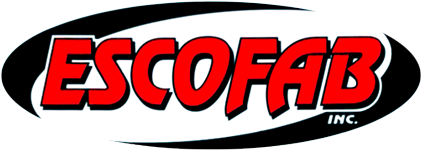What Is The Future Of Welding?
Welding has been around for centuries and has played a crucial role in various industries such as construction, manufacturing, and automotive. However, as technology continues to advance, so does the future of welding. In this blog post, we will explore the trends and innovations shaping the future of welding and how they are revolutionizing this essential process.
Automation and Robotics:
One of the most significant advancements in welding technology is the rise of automation and robotics. Traditional welding processes, which require skilled human welders, are being replaced by automated systems. Welding robots are now capable of handling complex welding tasks with precision and speed, resulting in improved efficiency and productivity. These machines can work tirelessly, reducing the need for breaks and ensuring consistent quality. Automation also enhances worker safety by minimizing exposure to hazardous welding conditions.
Artificial Intelligence and Machine Learning:
Artificial intelligence (AI) and machine learning are transforming various industries, and welding is no exception. AI-powered systems can analyze welding data, monitor weld quality, and make real-time adjustments to improve the welding process. By learning from previous welds, AI algorithms can optimize settings for different materials and welding techniques, resulting in better weld quality and reduced post-welding inspections. Machine learning also enables predictive maintenance, where machines can detect potential issues before they occur, minimizing downtime and maintenance costs.
Virtual Reality (VR) and Augmented Reality (AR):
VR and AR technologies are making inroads into welding training and simulation. These immersive technologies allow welders to practice their skills in a virtual environment, providing a safe and cost-effective training platform. VR and AR can simulate various welding scenarios, allowing welders to gain experience without the need for physical materials or equipment. Additionally, these technologies can provide real-time visual guidance during the welding process, overlaying important information and welding parameters directly onto the welder’s field of view, improving accuracy and reducing errors.
Laser Welding and Electron Beam Welding:
Traditional welding techniques, such as arc welding, are being supplemented by advanced methods like laser welding and electron beam welding. Laser welding uses a high-powered laser beam to melt and fuse materials together. This process offers several advantages, including precise control, high welding speeds, and minimal distortion. Electron beam welding, on the other hand, utilizes a focused beam of high-velocity electrons to create welds. This technique is particularly useful for joining complex and difficult-to-weld materials. These advanced welding methods are gaining popularity due to their superior quality, reduced heat input, and improved efficiency.
Internet of Things (IoT) Integration:
The integration of IoT in welding systems is enabling real-time monitoring and analysis of welding processes. IoT sensors and devices can collect and transmit data about welding parameters, such as temperature, voltage, and current, to a centralized system. This data can then be analyzed to identify trends, optimize settings, and improve weld quality. IoT integration also enables remote monitoring and control of welding operations, allowing for faster response times and reducing downtime.
Green Welding:
As sustainability becomes increasingly important, the future of welding is turning towards green solutions. Green welding focuses on minimizing the environmental impact of welding processes by reducing energy consumption, emissions, and waste. Advances in technology, such as more efficient power sources and eco-friendly shielding gases, contribute to greener welding practices. Additionally, the use of recycled or sustainable materials, as well as implementing efficient recycling and waste management systems, further promote environmentally friendly welding practices.
Conclusion:
The future of welding is filled with exciting advancements and innovations that promise to revolutionize the industry. Automation and robotics, artificial intelligence and machine learning, virtual and augmented reality, laser and electron beam welding, IoT integration, and green welding practices are just a few of the trends shaping the future of welding. These advancements not only improve productivity, precision, and efficiency but also make welding safer and more sustainable. As technology continues to progress, we can expect further developments in welding techniques and practices, leading to a more advanced and interconnected welding industry.
Got Questions? Let Us Help!
Escofab Inc. has been dedicated to providing quality machining and fabrication since 1981! Here at Escofab Inc. we utilize fabricating and machining to your specifications. We work to fit your needs and ensure customer satisfaction. Our friendly and informative staff are eager to assist you! Give us a call or come on in today; walk-ins welcome!
